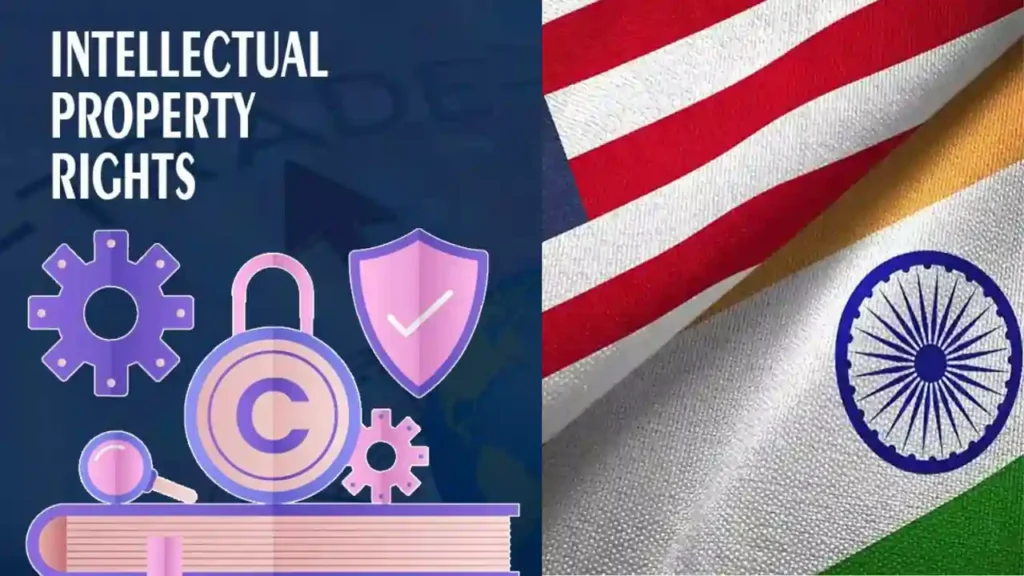New Delhi: The United States Trade Representative (USTR) has once again placed India on its ‘Priority Watch List’ in the 2025 Special 301 Report, released on April 29, 2025, highlighting significant concerns regarding India’s intellectual property rights (IPR) protection and enforcement. The annual report, which assesses IPR practices across more than 100 trading partners, identifies India as one of the “most challenging major economies” for IP protection, alongside seven other nations: China, Mexico, Chile, Argentina, Indonesia, Russia, and Venezuela. Additionally, 18 countries, including Pakistan, Brazil, and Turkey, are listed on the broader Watch List. This article provides an in-depth analysis of the USTR’s concerns, India’s efforts to strengthen its IP ecosystem, India’s response to the designation, and the broader context of India-U.S. trade relations, optimized for search engines to ensure visibility.

What is the Special 301 Report?
The Special 301 Report is an annual review mandated by Section 182 of the U.S. Trade Act of 1974. It evaluates the effectiveness of intellectual property protection and enforcement in U.S. trading partner countries. Intellectual property (IP) encompasses creations of the mind, such as inventions, literary and artistic works, designs, and symbols, names, and images used in commerce, as defined by the World Intellectual Property Organization (WIPO). The report categorizes countries into two tiers: the Priority Watch List, for nations with significant IP deficiencies that burden U.S. commerce, and the Watch List, for those with less severe issues. Countries listed may face trade actions, including tariffs, investigations, or other retaliatory measures.
In 2025, the USTR, led by Jamieson Greer, emphasized the need for trading partners to address IP violations to protect the rights of U.S. businesses and individuals. India’s continued presence on the Priority Watch List reflects long-standing concerns about its IP regime, despite recent efforts to improve protections.
Why is India on the Priority Watch List?
The 2025 Special 301 Report outlines several critical issues in India’s IP ecosystem that justify its placement on the Priority Watch List. These concerns span patentability, enforcement, counterfeiting, trademark issues, regulatory burdens, and procedural inefficiencies.
1. Patentability Criteria and Revocation Risks
A primary concern is Section 3(d) of the Indian Patents Act, 1970, which deems the “mere discovery of a new form of a known substance” non-patentable unless it significantly enhances the substance’s efficacy. This provision, particularly impactful in the pharmaceutical sector, is viewed as a barrier to innovation by limiting patent protections for incremental advancements. The USTR report highlights the “procedural and discretionary invocation of patentability criteria,” which creates uncertainty and raises the risk of patent revocations, affecting companies across various industries.
Moreover, patent applicants face long waiting periods for grants and excessive reporting requirements, which delay innovation and increase costs. Stakeholders have expressed frustration over the vagueness in interpreting the Patents Act, which undermines predictability and reliability for innovators seeking to protect their IP in India.
2. Ineffective IP Enforcement
India’s IP enforcement mechanisms are deemed inadequate, with several specific challenges:
- Weak Law Enforcement: Coordination between national and state law enforcement agencies is insufficient, leading to gaps in addressing IP violations effectively.
- Lenient Penalties: Penalties for IP infringements lack the severity needed to deter violations, allowing piracy and counterfeiting to persist.
- Piracy and Counterfeiting Hubs: India’s inclusion on the 2024 Notorious Markets List underscores its role as a hub for counterfeit goods. The report notes that India, alongside China, Hong Kong, the United Arab Emirates, and Singapore, is a top source of counterfeit pharmaceuticals seized at the U.S. border in 2024.
- Online Piracy: The rise of digitization has exacerbated online piracy, with inadequate measures to curb unauthorized distribution of copyrighted content, such as movies, music, and software.
3. Trademark-Related Challenges
The USTR report points to high levels of counterfeiting and poor examination quality in India’s trademark system. India’s non-participation in the Singapore Treaty on the Law of Trademarks, which sets international standards for trademark registration and management, contributes to inefficiencies in trademark protection. This gap hinders the ability of businesses, both domestic and international, to secure and enforce trademark rights effectively.
4. New Burdens on Foreign Entities
The Biological Diversity Rules, 2024, impose additional requirements on foreign entities seeking IP protection for Indian biological resources. These rules mandate prior approval, adding complexity and potential delays for international companies operating in sectors like biotechnology and pharmaceuticals.
5. High Customs Duties on IP-Intensive Products
India maintains high customs duties on IP-intensive products, including information and communications technology (ICT) products, solar energy equipment, medical devices, pharmaceuticals, and capital goods. These duties are seen as barriers to trade and innovation, increasing costs for companies and consumers.
6. Delays and Lack of Awareness
Significant delays in granting IPRs and a substantial backlog in patent and trademark applications remain persistent challenges. Additionally, a lack of public awareness and education about intellectual property rights contributes to widespread violations, as many individuals and businesses are unaware of the importance of respecting IP.
India’s Efforts to Strengthen Its IP Ecosystem
Despite these concerns, the USTR acknowledges India’s efforts to improve its IP regime, reflecting a commitment to aligning with global standards. Key initiatives include:
- National Intellectual Property Rights (IPR) Policy, 2016: Aligned with the World Trade Organization’s (WTO) Trade-Related Aspects of Intellectual Property Rights (TRIPS) Agreement, this policy aims to foster innovation and strengthen IP protection.
- National Intellectual Property Awareness Mission (NIPAM): Launched to enhance public understanding of IP rights through education and outreach programs.
- Scheme for Startups Intellectual Property Protection (SIPP): Supports startups in securing IP rights to encourage innovation.
- IP Saarthi Chatbot: A digital tool designed to assist users with IP-related queries, improving accessibility to information.
- Patents (Amendments) Rules, 2024: These rules streamline patent registration and approval processes, addressing some concerns about delays and cumbersome reporting requirements.
- Intellectual Property Divisions in High Courts: In 2024, the Calcutta and Himachal Pradesh High Courts established dedicated IP divisions, joining existing divisions in Delhi and Madras High Courts, to handle IP disputes more efficiently.
- WIPO Treaty Commitments: India has committed to aligning with the WIPO Performances and Phonograms Treaty and Copyright Treaty, reinforcing its adherence to international copyright standards.
These initiatives demonstrate India’s proactive approach to addressing IP challenges, though the USTR notes that progress remains inconsistent.
India’s Stance on the Special 301 Report
India has consistently maintained that its IPR regime is fully compliant with global trade norms under the WTO’s TRIPS Agreement. The country views the Special 301 Report as a unilateral measure by the U.S. to pressure nations into adopting IP protections that exceed TRIPS requirements. A trade expert cited by PTI emphasized that India has a well-established legislative, administrative, and judicial framework to safeguard IPR, meeting its international obligations.
India argues that the USTR’s concerns are based primarily on inputs from American industry stakeholders, reflecting their perceptions rather than objective deficiencies in India’s IP system. This perspective highlights a tension between India’s domestic innovation priorities and U.S. expectations for stricter IP protections.
India-U.S. Trade Context
The 2025 Special 301 Report comes amid ongoing India-U.S. negotiations for a bilateral trade agreement aimed at boosting two-way commerce to $500 billion by 2030. The U.S. seeks to address its $41.18 billion trade deficit with India in 2024–25 through this pact. The designation of India on the Priority Watch List adds complexity to these negotiations, as IP protection is a key U.S. priority.
The USTR has expressed its intent to continue engaging with India through the Trade Policy Forum’s Intellectual Property Working Group to address these concerns collaboratively. This engagement is critical as both nations work to strengthen economic ties while navigating differences in IP policy.
Broader Implications for India
India’s placement on the Priority Watch List underscores the need to balance domestic innovation needs with international IP expectations. While initiatives like the 2024 Patents Rules and new IP divisions in high courts show progress, challenges such as enforcement gaps, counterfeiting, and procedural inefficiencies persist. Addressing these issues will be crucial for India to enhance its global trade position and attract foreign investment.
The report also highlights the growing challenge of online piracy, driven by digitization, which requires robust digital enforcement mechanisms. Additionally, India’s role as a source of counterfeit pharmaceuticals seized at the U.S. border raises concerns about its pharmaceutical industry’s compliance with international standards.
Conclusion
The 2025 Special 301 Report’s designation of India on the Priority Watch List reflects ongoing tensions in India-U.S. trade relations over intellectual property rights. While India has made strides in strengthening its IP ecosystem through policies, judicial reforms, and awareness campaigns, the USTR identifies significant gaps in enforcement, patentability, and counterfeiting prevention. As India and the U.S. negotiate a bilateral trade agreement, addressing these concerns will be critical to achieving mutual economic goals. By continuing to refine its IP framework and engaging with international partners, India can reinforce its position as a global innovation hub while meeting the expectations of its trading partners.
FAQs
1. What is the U.S. Special 301 Report, and why does it matter for India in 2025?
Answer: The Special 301 Report is an annual review by the United States Trade Representative (USTR) under Section 182 of the U.S. Trade Act of 1974. It evaluates intellectual property rights (IPR) protection and enforcement in over 100 trading partner countries. In 2025, India’s placement on the Priority Watch List highlights concerns about its IP regime, including patent issues, weak enforcement, and counterfeiting. This matters for India as it could impact trade relations with the U.S., especially during ongoing negotiations for a bilateral trade agreement aiming for $500 billion in commerce by 2030. Being on the list may lead to trade actions like tariffs or investigations, affecting India’s global trade position.
2. Why was India placed on the Priority Watch List in the 2025 Special 301 Report?
Answer: India was placed on the Priority Watch List due to persistent issues in its intellectual property ecosystem, as outlined in the 2025 Special 301 Report. Key concerns include Section 3(d) of the Indian Patents Act, 1970, which restricts patents on new forms of known substances, risking patent revocations. Other issues involve ineffective IP enforcement, high levels of counterfeiting (notably India’s inclusion on the 2024 Notorious Markets List), online piracy, poor trademark examination quality, and high customs duties on IP-intensive products. The Biological Diversity Rules, 2024, imposing approval requirements for foreign entities, and delays in IPR grants also contribute to India’s designation.
3. How has India responded to its inclusion on the U.S. Priority Watch List in 2025?
Answer: India maintains that its IPR regime is fully compliant with global trade norms under the World Trade Organization’s (WTO) Trade-Related Aspects of Intellectual Property Rights (TRIPS) Agreement. It views the Special 301 Report as a unilateral U.S. measure to pressure countries into adopting stricter IP protections beyond TRIPS requirements. Indian officials and trade experts argue that India has a robust legislative, administrative, and judicial framework for IPR protection. The country emphasizes that USTR concerns are based on American industry perceptions rather than objective deficiencies, highlighting a tension between domestic innovation priorities and U.S. expectations.
4. What steps has India taken to improve its intellectual property rights framework?
Answer: India has implemented several initiatives to strengthen its IP ecosystem, as acknowledged in the 2025 Special 301 Report. These include the National Intellectual Property Rights (IPR) Policy, 2016, aligned with the WTO’s TRIPS Agreement; the National Intellectual Property Awareness Mission (NIPAM) to educate the public; and the Scheme for Startups Intellectual Property Protection (SIPP) to support innovation. The Patents (Amendments) Rules, 2024, streamline patent processes, while new Intellectual Property Divisions in Calcutta and Himachal Pradesh High Courts (2024) join those in Delhi and Madras to handle IP disputes. India also launched the IP Saarthi chatbot and committed to WIPO’s Performances and Phonograms Treaty and Copyright Treaty.
5. How does India’s Priority Watch List status affect India-U.S. trade relations in 2025?
Answer: India’s designation on the Priority Watch List complicates its trade relationship with the U.S., particularly as both nations negotiate a bilateral trade agreement to achieve $500 billion in two-way commerce by 2030. The U.S. aims to reduce its $41.18 billion trade deficit with India (2024–25), and IP protection is a key priority. The USTR plans to engage India through the Trade Policy Forum’s Intellectual Property Working Group to address concerns. While India’s efforts to improve its IP regime are noted, unresolved issues like patent revocations, counterfeiting, and enforcement gaps could lead to trade tensions, potentially affecting investment and market access for both countries.

